Sterling Heights, MI Pollen and Allergy Report for Summer 2023
Pollen Allergy Trends in Sterling Heights, MI
When is pollen lowest in Sterling Heights, MI?

February
Lowest month total PPM
Avg. PPM
When is pollen highest in Sterling Heights, MI?

May
Highest month total PPM
Avg. PPM
How does pollen in Sterling Heights, MI compare to Michigan?
Sterling Heights has a lower average PPM than the state of Michigan.
Sterling Heights yearly avg PPM:
Michigan yearly avg PPM:
How does pollen in Sterling Heights, MI compare to the USA?
Sterling Heights has a lower average PPM than the USA.
Sterling Heights yearly avg PPM:
USA yearly avg PPM:
Is pollen worse this year in Sterling Heights, MI?
Spring 2023 was worse than spring 2022.
Spring 2023 PPM:
Spring 2022 PPM:
Average PPM in Sterling Heights, MI
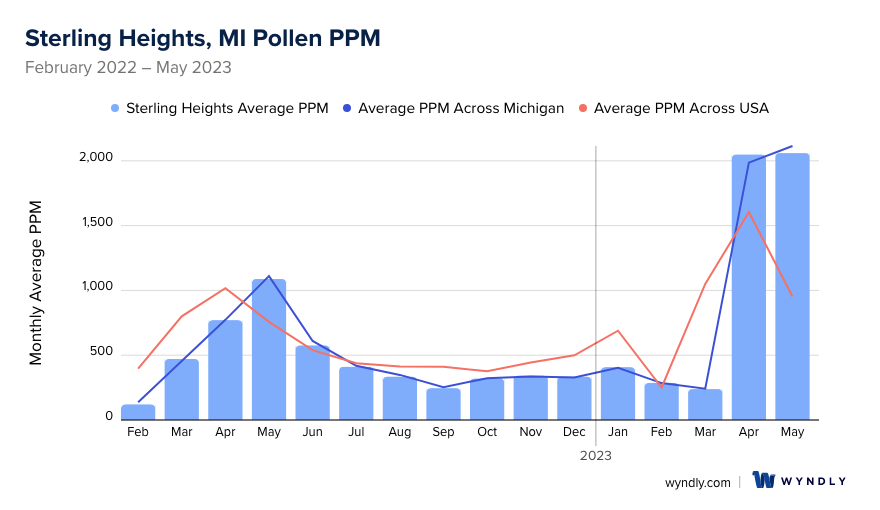
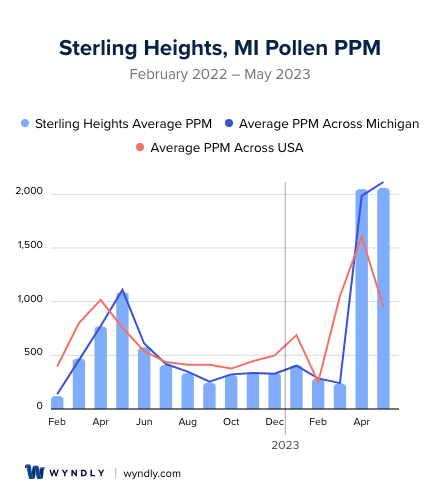
Sterling Heights, MI Pollen and Allergy Breakdown by Month
Grass
When is grass pollen highest in Sterling Heights, MI?
April has the highest grass pollen in Sterling Heights, MI with an average PPM of
When is grass pollen lowest in Sterling Heights, MI?
November has the lowest grass pollen in Sterling Heights, MI with an average PPM of
Tree
When is tree pollen highest in Sterling Heights, MI?
April has the highest tree pollen in Sterling Heights, MI with an average PPM of
When is tree pollen lowest in Sterling Heights, MI?
September has the lowest tree pollen in Sterling Heights, MI with an average PPM of
Weed
When is weed pollen highest in Sterling Heights, MI?
April has the highest weed pollen in Sterling Heights, MI with an average PPM of
When is weed pollen lowest in Sterling Heights, MI?
February has the lowest weed pollen in Sterling Heights, MI with an average PPM of
Sterling Heights, MI Pollen Monthly Breakdown by Pollen Type
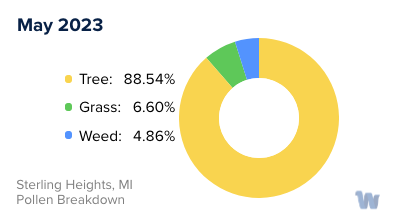
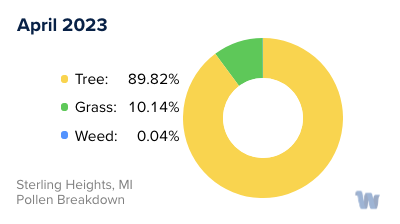
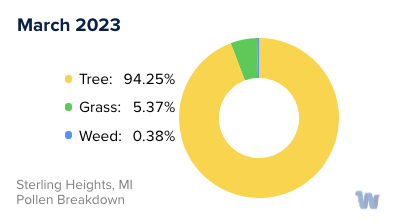
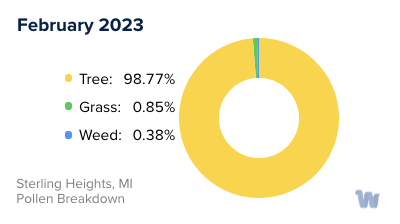

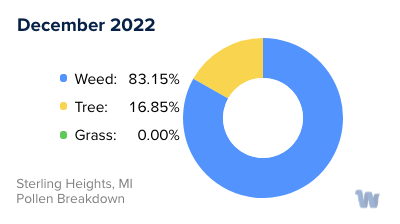
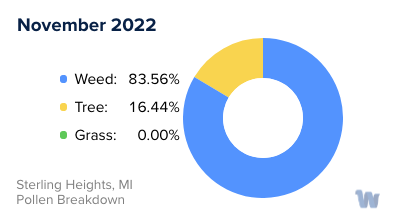
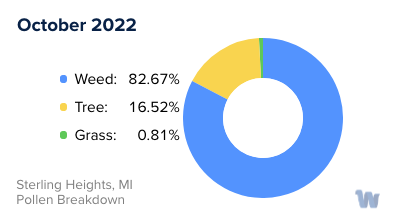
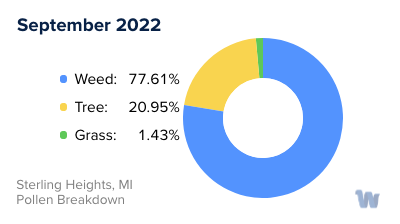
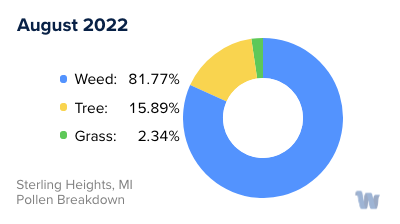

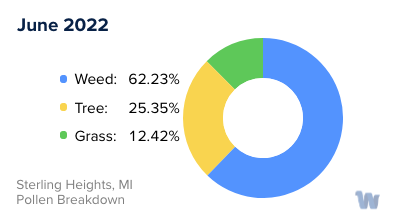
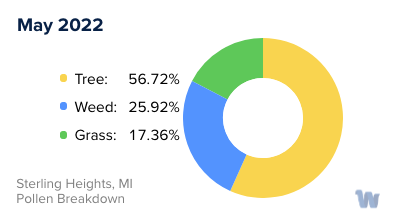
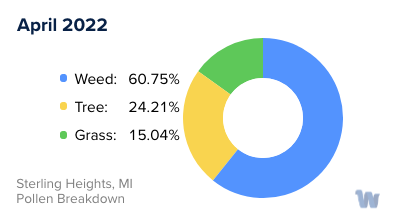
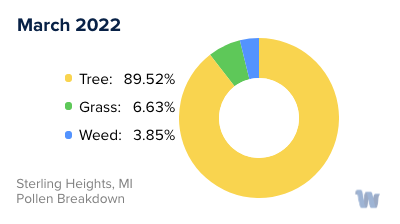
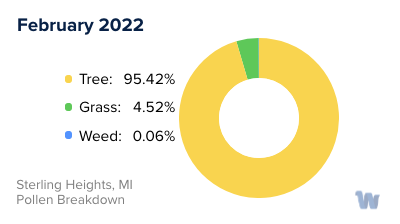
Pollen and Hay Fever in Sterling Heights, MI
Pollen allergies, commonly referred to as hay fever, are a widespread issue for many residents of Sterling Heights, Michigan. The city's location and climate provide the perfect backdrop for various types of pollen that can cause discomfort and disruption to daily life.
Pollen, a fine powdery substance discharged from the male cone of seed plants, is a crucial player in plant reproduction. However, for people with pollen allergies, it's a troublemaker that can cause a variety of symptoms including sneezing, runny or congested nose, and itchy, watering eyes.
The most common culprits of pollen allergies in Sterling Heights are trees, grasses, and weeds. Each of these plants releases their pollen at different times of the year, leading to an extended "pollen season" that can span much of the year.
Tree pollen is typically the first to arrive in the year, usually in the early spring. In Sterling Heights, the trees that most commonly produce allergenic pollen are oak, maple, and birch. These trees produce large amounts of lightweight pollen that can be carried long distances by the wind, increasing the likelihood of an allergic reaction.
Grasses typically start releasing their pollen in late spring and early summer. The most common grasses in Sterling Heights that produce allergenic pollen include Timothy grass, Kentucky bluegrass, and ryegrass.
Finally, weeds become a concern in the late summer and fall. Ragweed is the most significant weed pollen producer in the Sterling Heights area and is known to cause severe allergic reactions. Other weeds, such as lamb's quarters and plantain, also contribute to the overall pollen count.
In summary, pollen allergies in Sterling Heights, Michigan, are driven by the cyclical release of pollen from different types of plants throughout the year. Understanding these cycles can help individuals prepare and manage their symptoms more effectively.


